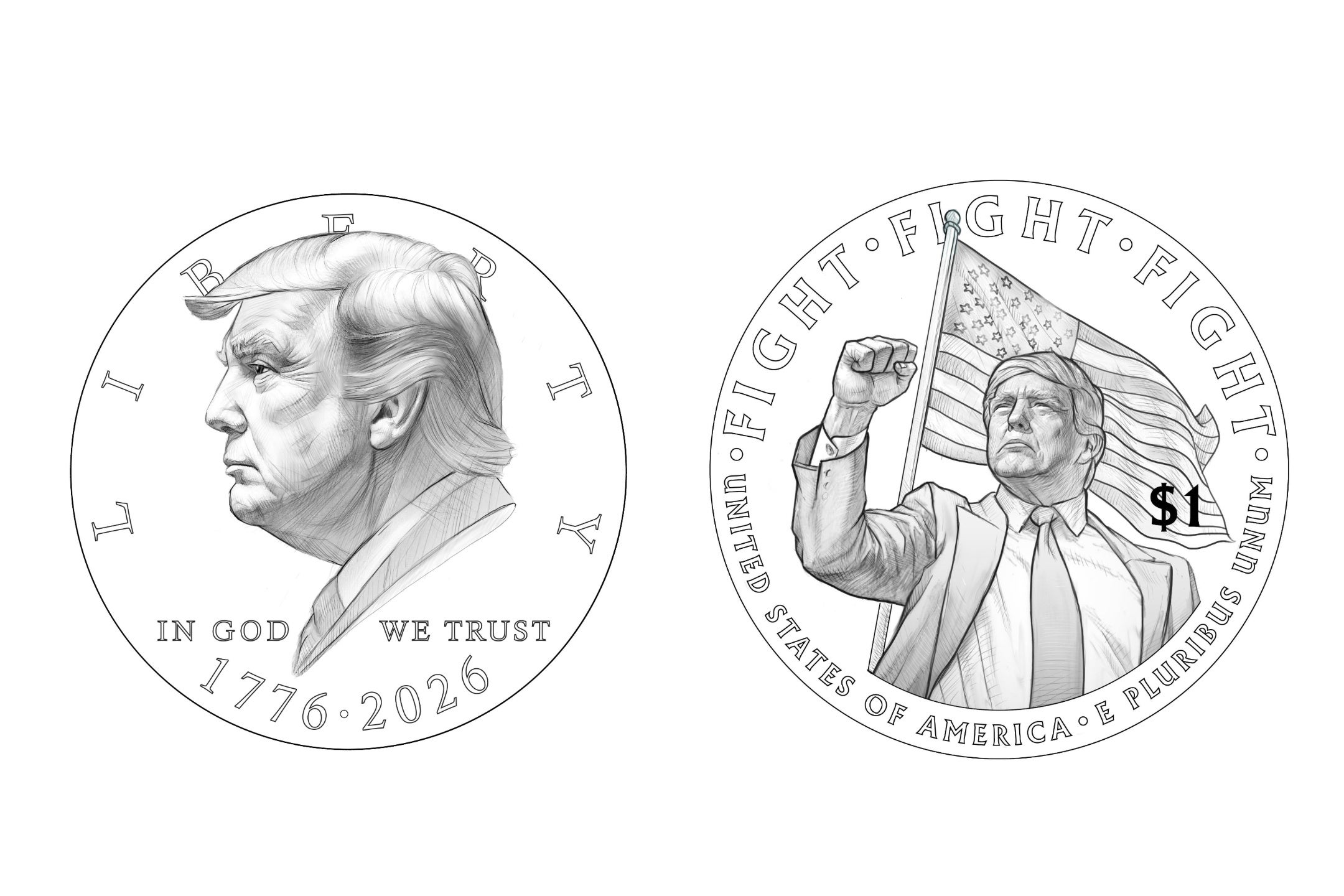President Donald Trump’s administration has defended his proposal to mint a $1 coin boasting his face — despite a federal law that prohibits it.
In honor of America’s 250th anniversary, the U.S. Treasury unveiled a draft of the $1 coin last week, with both the “heads” and “tails” sides featuring images of Trump.
The announcement raised concerns that the plan violated a federal law from 1886, which states that “only the portrait of a deceased individual may appear on United States currency and securities.”
Still, the Treasury Department defended the plan on Monday.
Treasury Secretary Scott Bessent plans to exercise authorities under the Circulating Collectible Coin Redesign Act of 2020, which was passed during the first Trump administration, the department wrote on X. That measure allows the Treasury Secretary to mint $1 coins “with designs emblematic of the United States semiquincentennial.”

“On this momentous anniversary, there is no profile more emblematic for the front of this coin than that of our serving President, Donald J. Trump,” the department wrote.
Under the law, the coin could be issued in 2026.
However, the Trump administration’s proposal may still run into a similar restriction under this legislation, which states “no head and shoulders portrait or bust of any person, living or dead, and no portrait of a living person may be included in the design on the reverse” of specific coins.
According to the draft, one side of the coin features Trump’s profile while the other shows the president raising his fist in front of an American flag, surrounded by the words “Fight, Fight, Fight,” resembling the moment he stood up after being shot at in Butler, Pennsylvania, in July.
The courts may eventually have to settle whether the coins are minted.
There have been workarounds in the past. For instance, former President Calvin Coolidge’s portrait appeared on a half dollar in 1926 to commemorate the country’s 150th anniversary. The coin marked the “first time a U.S. President’s portrait appeared on a coin during his lifetime,” according to the U.S. Mint’s website.
The 1886 law came about after an “uproar over the actions of the Chief of the Bureau of Engraving and Printing, Spencer Clark,” who put himself “on a five cent note and had a large quantity of them printed before it was noticed,” according to a Treasury Department page, which has since been removed.
Next year, the U.S. could see several new coins. The 2020 law also permits the Treasury to mint quarter dollars in 2026 “with up to five different designs emblematic of the United States semiquincentennial.”
One of the designs must be “emblematic of a woman’s or women’s contribution to the birth of the Nation,” the Declaration of Independence or any other monumental moments in American history, the law says.
